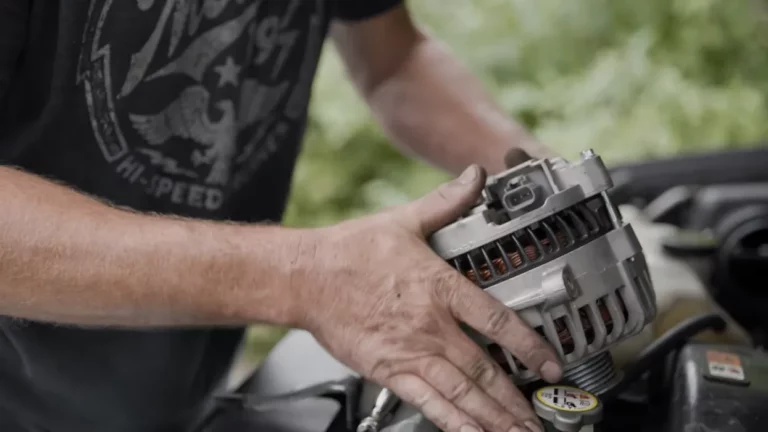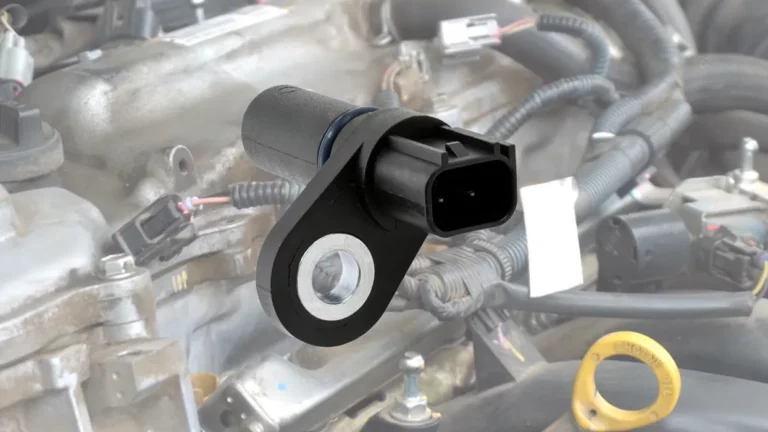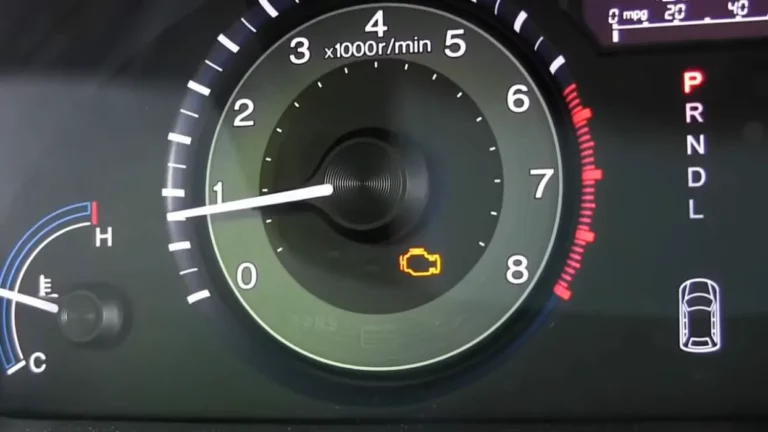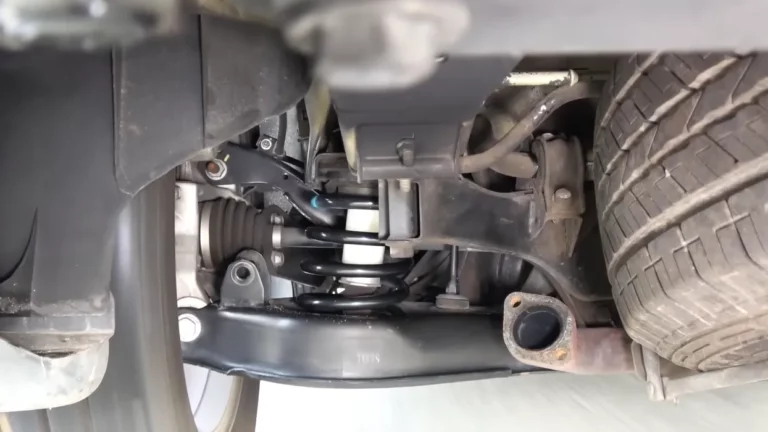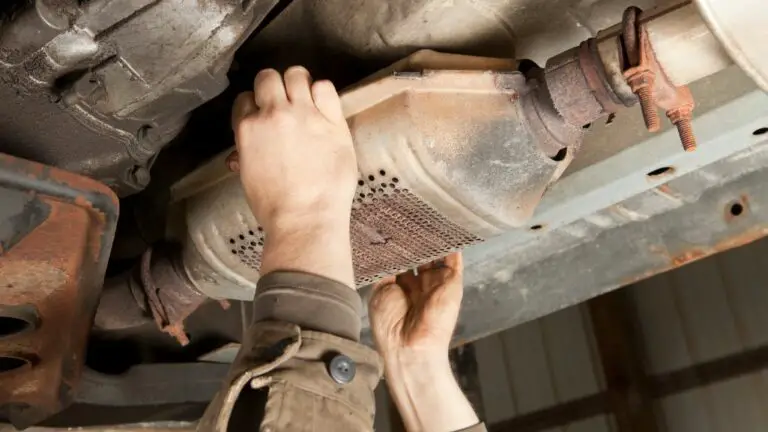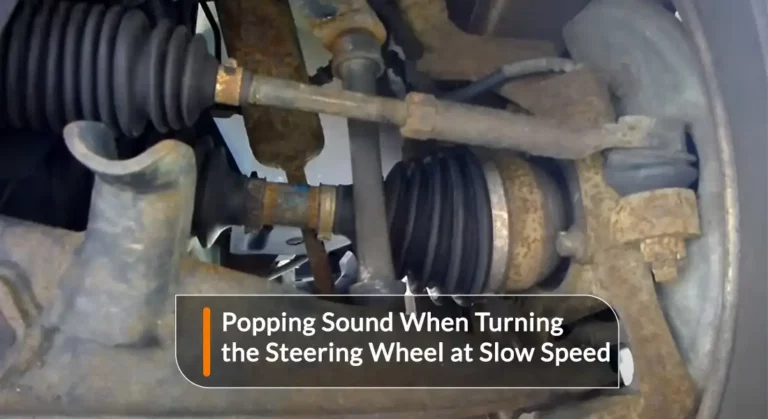What Causes Oil In Radiator – How to Fix? (Avoid Damage)
Fluids and lubricants inside our engine have individual roles to play. Typically when mixed up, they lose their chemical composition and efficiency. The same happens when oil seeps inside the radiator and tries to mingle with coolant.
So, why is there oil in radiator? Typically, a bad head gasket or engine block can be the culprit behind oil in radiator issue. Cracks in these parts cause oil to mix with coolant.
However, in case you put it accidentally, that’s a different scenario. Then again, the good news is, there are solutions to each issue only if you take immediate action.

What Causes Oil Goes In The Radiator?
Some of the common reasons why you find oil in radiator include bad head gasket, engine block, and transmission cooler.
| Causes | Solution |
|---|---|
| Blown Head Gasket | Get a new head gasket. |
| Damaged Engine Block | Repair or replace the block. |
| Cracked Transmission Cooler | Get a new transmission cooler. |
| Bad Heat Exchanger | Replace the exchanger. |
#1- Blown Head Gasket Or Head
A head gasket works to seal the openings between combustion chambers, oil channels, and coolant channels. When these passages develop holes or there’s a crack in the cast metal, or (worst case) the gasket gets damaged, oil can leak into the radiator. Result? The coolant and oil get mixed up and contaminated.
A very common cause of head gasket failure is overheated engine which leads to thermal expansion and contraction. Besides pre-ignition, detonation, abrupt temperature changes, damaged cylinder head, bad thermostat and bad radiator cap can cause damage to the gasket too. These are all related to one another basically.
One way to find it out is to remove the radiator cap when it’s cold and start the engine. If you see air coming out, then this indicates a cracked gasket.
Solution
- Flush engine oil and radiator system to get rid of contamination.
- Have the head gasket replaced. Or use a head gasket sealer. But note that it’s a temporary fix and won’t be as efficient as replacing the gasket.
Damaged Engine Block
An important role of engine block is to house the flow of fluids and direct them throughout the engine. These fluids include both oil and coolant. In case the block gets cracked, it lets the fluids mix together and move where they shouldn’t.
You’ll find different reasons behind damaged blocks such as engine overheating, coolant freezing, poor maintenance, improper installation, and age. All these put pressure on the block causing it to crack.
Solution
- Repair or replace the engine block depending on its condition.
Cracked Transmission Cooler
Some newer cars like Ford F-150 and Chevrolet Silverado have transmission coolers integrated with radiators. If there’s any crack in the internal tubing of cooler, it causes transmission fluid and coolant to mix up. This leads to contamination of fluids.
When contaminated fluids circulate throughout the engine and come in contact with gasket, it affects the sealing. And if gasket fails, it eventually allows oil to seep into coolant passages.
The reasons why transmission cooler fails could be corroded cooler or cooling lines, impact damage, clogging, loose fittings or clamps, wear and tear.
Solution
- Get a new transmission cooler.
#2- Bad Heat Exchanger
Heat exchange helps transfer heat from engine to coolant and from coolant to engine. If there’s any damage or leak in the mechanism, the fluids will end up getting mixed.
Usually, corrosion can develop cracks in the exchanger. Some other causes like poor maintenance, improper installation, and physical damage can also deteriorate such devices.
Solution
- Properly install a new exchanger.
What Happens When Oil Mixes In The Radiator?
When oil mixes with coolant, emulsification takes place which makes the mix look milky.
Apart from that, it leads to other problems. The cooling capacity gets reduced, coolant level drops, friction increases due to degraded lubrication, system overheats, components develop leaks, and eventually engine/engine parts fail. These are the hidden yet common oil in radiator symptoms. All these result in poor performance of engine, high fuel consumption, and reduced power output.
1. Low Cooling Capacity And Level
When oil and coolant mix, it disrupts the chemical formulations of the fluids and they lose their efficiency. Subsequently, it affects the coolant’s ability to absorb, transfer, and dissipate heat from the engine. Not just that, oil entering the cooling system can cause sludge forming too. And this decreases the flow of coolant resulting in poor cooling capacity.
Apart from this, coolant level drops, that too inefficiently. You can check it from the coolant reservoir markings.
2. Overheating And System Damage
As I mentioned, oil in coolant affects the contents and additives present in the fluids. Result, the oil fails to lubricate the engine causing increased friction while coolant fails to cool it. Both situations lead to overheating.
If engine gets overheated, it can cause several engine damages. Cylinder heads, bearings, crankshafts, and camshafts can fail. And any carelessness can cause unpredictable failure of engine and other accidents.
Read Also: Oil In Throttle Body – [Cauese, Symptoms & Fix!]
3. Leakage At Different Components
In case the oil and coolant mix gets very thick, it blocks the passages within the radiator. This works to increase the pressure in the system which leads to leakage at various points.
Not just that, different components deteriorate over time due to such contamination. Eventually, it causes leaks in the hoses and several other parts.
4. Radiator Degradation
When oil leaks out, it can cause the radiator’s metal fins to corrode. This can result in leaks and reduced efficacy of the cooling system. Moreover, the presence of oil there can clog the cooling tubes too. This leads to overheating, poor coolant flow, and engine or radiator damage.
Read Also: Smoke from Oil Cap – Causes, Reason & How To Fix!
5. Mixture Turning Milky
The mix of oil and coolant forms a milky or frothy white stuff inside the coolant reservoir and radiator. Most people often call it “mayonnaise” since it looks very much alike. Technically, it’s emulsion.
Such changes happen because of the emulsifying agent (concentrate) present in lubricant. The additive helps keep engine operation optimum, prevents foaming, and reduces black smoke. However, when water or coolant combines with the agent, it creates droplets or pockets within the oil and starts appearing milky white. The more the concentration, the cloudier it is.
6. Sweet Or Smoky Smell
Two kinds of smells may help you identify coolant and oil mixture.
Coolant emits a noticeably sweet smell when it’s mixed with oil. It should come right out of the car cabin. You can also check if the dipstick smells sweet and has a milky fluid on it. This indicates the mixture too.
Heavy smoke coming from the exhaust is another pointer. It could mean that the head gasket has gone downhill. Besides mixing up oil and coolant, a damaged gasket can trigger them to enter the combustion chamber and get burnt with fuel. Eventually, we see exhaust smoke come out.
If the mix contains more coolant than oil, the exhaust may appear white or light blue. This happens due to water vapor of the coolant mixing with hot gases. In case it’s oil primarily with a bit of antifreeze, then the gas would look blue-gray. It’s because of the burnt oil. And if the mix has a good share of both coolant and oil, then you may see gray or thick white smoke.
Read Also: Oil Leak between Engine and Transmission – How To Fix?
How Do I Get Oil Out Of My Radiator?
Flushing the cooling system thoroughly with clean water and using radiator oil remover can be an effective oil in radiator fix. Let me explain the steps.
- Turn off the engine.
- Open the drain valve.
- Drain the coolant. I suggest you get a container to make it hold the fluid and avoid mess.
- Flush the cooling system with clean water. Keep doing it until the water looks clear.
- Use Radiator Oil Remover for more effective results. Along with oil, it removes organic deposits and other kinds of debris. The additive helps improve coolant circulation while preventing degradation of hoses and gaskets.
- Add coolant.
- Check for leaks or damages and repair or replace accordingly.
These steps will only be handy when you accidentally put oil in radiator.
Frequently Asked Questions (FAQs)
How Much Does It Cost To Fix Oil In Radiator?
The cost to fix oil in radiator can range from $200 to $8,000 depending on the cause of the issue.
If it’s damaged cooler or loose hose, then it may take $200 to $500 to fix it. In case of damaged head gasket, the cost can be around $1,000 to $3,000 or more. If it’s engine block, then it may take around $3,000 to over $8,000 to replace it.
Can I Drive With Oil In Coolant?
No. you shouldn’t drive with oil in coolant since it can lead to degradation of engine parts, rough idling, misfires, loss of power, and failure of system.
If you notice any sign of oil and coolant mixture, then stop driving. Have the car towed and checked by a tech.
Will A Blown Head Gasket Always Have Water In The Oil?
No. Sometimes the device can fail and there won’t be any evidence of coolant or water mixing with oil.
So, it varies based on the location and severity of head gasket damage. Holes or cracks in some places of head gasket can cause coolant to leak into combustion chamber and move around outside of the engine without mixing with oil
Final Words
Make sure to supervise engine oil regularly. If you notice any signs of contamination or discoloration, change it.
Also, check the coolant level and refill whenever it’s low. Driving car with low coolant can trigger engine to overheat which can end up with oil and radiator mixture. I suggest you inspect the radiator and hoses too for damages or leaks and repair or replace them accordingly.
All this scrutiny will help you prevent fluid mix-ups.
And if it does get mixed, then find out the core problem behind it and take steps accordingly.

